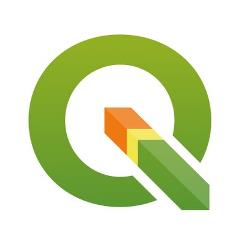What is QGIS?
The acronym QGIS stands for Quantum Geographical Information System, a software that was first released in 2002 and has since steadily gained popularity. It is a cross-platform software, which runs on the 32-bit or 64-bit versions of Linux, Windows and MacOS and was released under the open source GNU General Public License. This means that QGIS is free to download, share and everyone can review and modify the source code. The program is developed by an active group of volunteers from many European countries and North America, and sponsored by a variety of user and support groups, local governments and companies. The latest version, 3.10 'A Coruña', was released in November 2019. Over the last five years, many companies, universities and surveys have adopted QGIS as their de facto standard GIS platform.
Advantages over other GIS software
Being a free-of-charge product, the main competitive advantage of QGIS is probably its cost, an important factor not only for consultants and junior explorers, but also for larger companies. The snappy interface, excellent map layout functions and the multitude of open source plugins are also key advantages. What continues to amaze is the sheer variety of file formats than can be thrown at QGIS: AutoCAD DXF, Shape files, GeoTIFF, CSV, GPX, KML, Mapinfo files, Golden Software GRD files, and many more. Previously, only the Global Mapper software offered similar capabilities. A very large international user base means that almost all technical question can be answered via various online forums (such as GIS Stack Exchange) in a short timeframe. Since version 3, QGIS supports the Geopackage format, which overcomes many of the limitations of shapefiles and geodatabase files, formats that are native to ESRI's ArcGIS software. The Geopackage format is open source and allows storing raster data (such as gridded elevation data or imagery) in addition to vector data, all in a single file that uses an SQLite database. Further, and arguably some of the biggest advantages are the possibilities for users to program their own custom scripts and code in a Python console and to design plugins themselves using the Python programming language.
Current shortfalls and opportunities

Most users who are adapted to commercial software packages will probably immediately miss a support hotline they can rely on for installation problems or technical issues with the tasks they are trying to perform. Also, from time to time the new QGIS versions have programming bugs that may cause crashes. However, there are long-term stable releases (presently version 3.4) and older versions such as 2.18 that run reliably. I have also observed inconsistencies in some coordinate system transformations, especially when dealing with older reference systems, highlighting the importance of quality control when relying on maps for exploration decisions. Currently, QGIS has no built-in exploration and drill hole management tools, such as those of MapInfo combined with Discover, and similarly, there are no commercial third-party plugins for exploration, such as the Geosoft Target plugin for ArcGIS. The 'Geoscience Plugin' for QGIS authored by Roland Hill aims to bridge this gap, but it is still in the development stage. Perhaps representing more of an opportunity than a shortfall, the mobile version for Android systems, named QField, is currently under open source development by the Swiss OPENGIS.ch GmbH. This crowd-funded app (see link below) allows field mapping on the fly using Android tablets with GPS, an exciting topic for an in-depth follow-up article.
References
https://docs.qgis.org/testing/en/docs/user_manual (QGIS online documentation)
https://www.geopackage.org/ (official website of the Geopackage file format)
https://github.com/rolandhill/geoscience (Geoscience Plugin for QGIS)
https://qfield.org/ (QField app for Android)